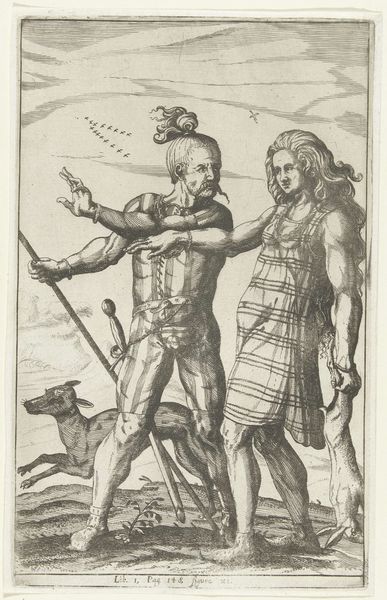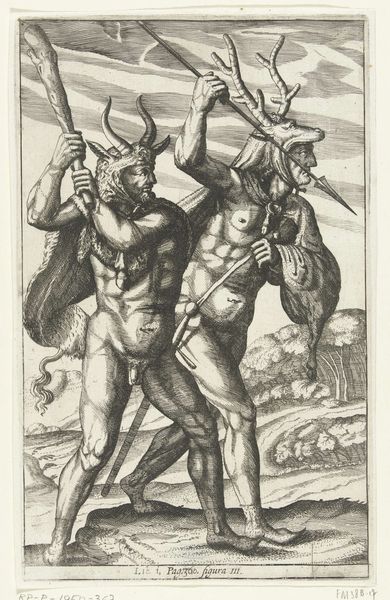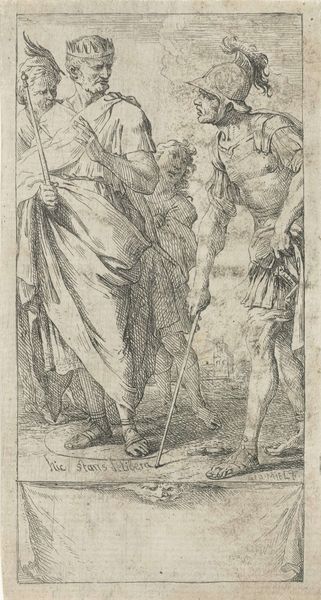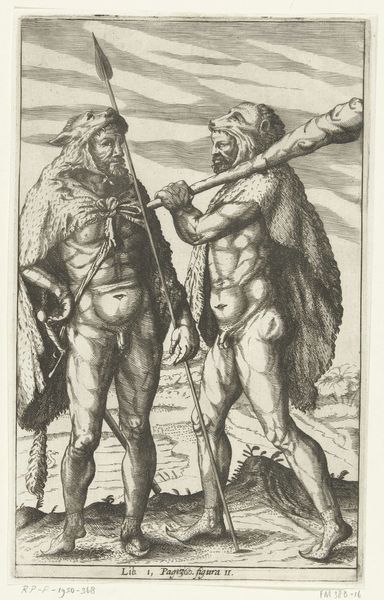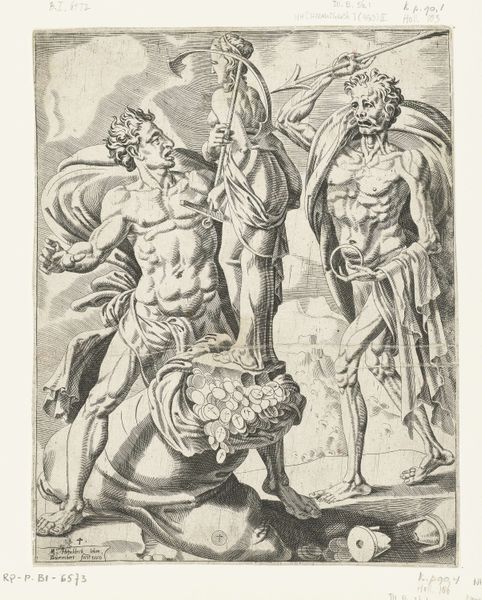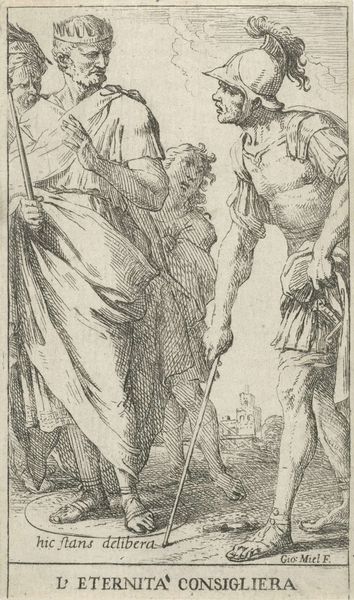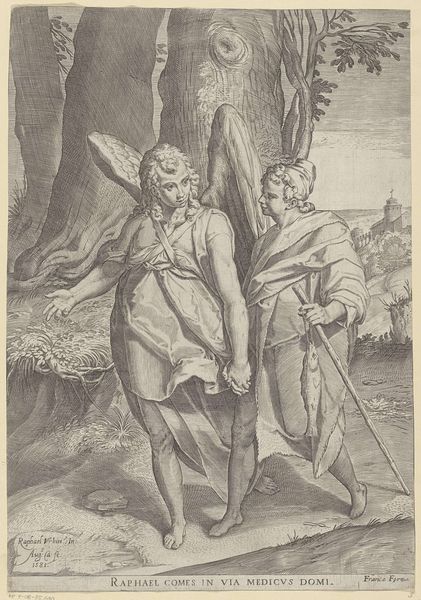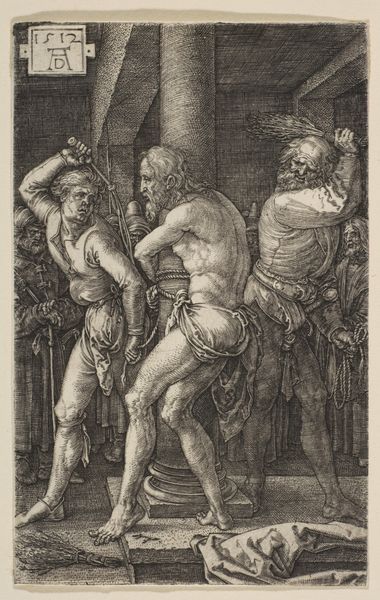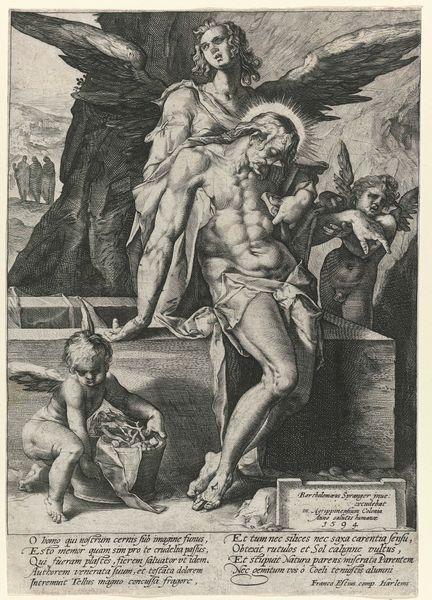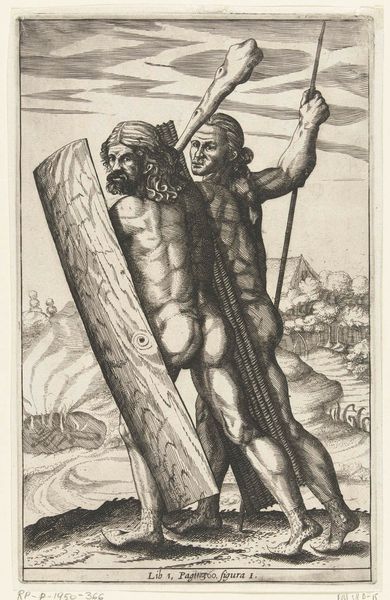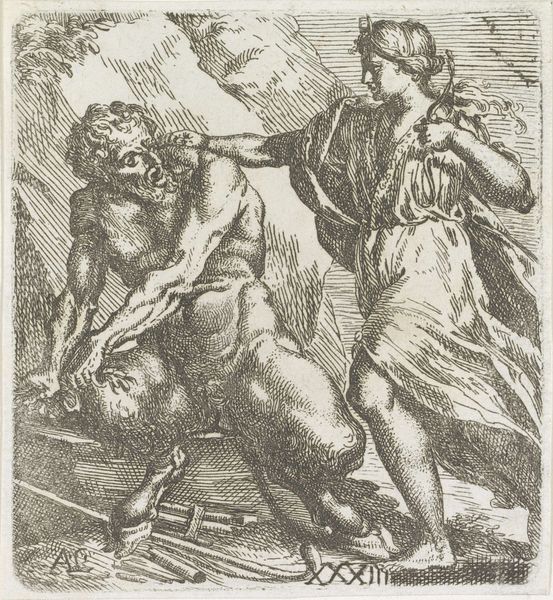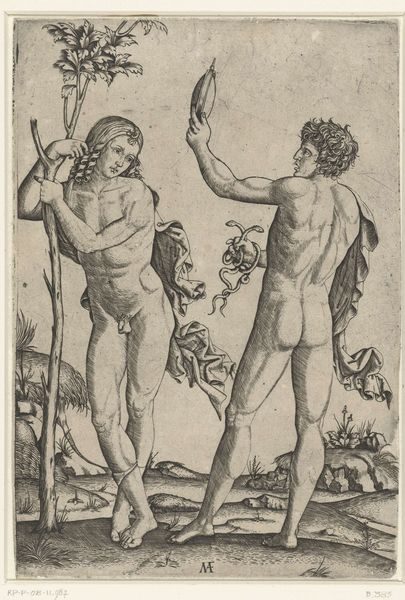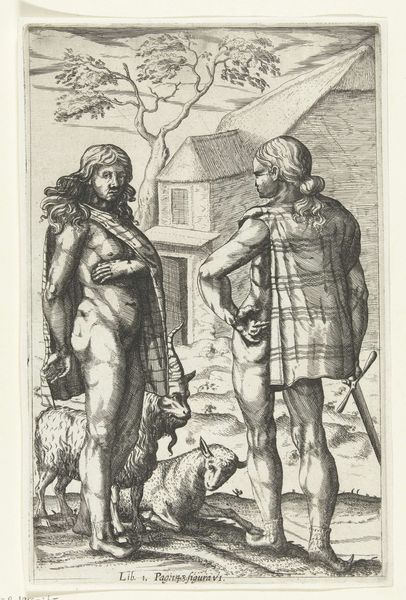
print, engraving
#
dutch-golden-age
# print
#
pen sketch
#
figuration
#
genre-painting
#
history-painting
#
nude
#
engraving
Dimensions: height 260 mm, width 162 mm
Copyright: Rijks Museum: Open Domain
Curator: Welcome. Before us hangs Nicolaes van Geelkercken's "Two Germanic Warriors, figura V," created between 1614 and 1616. Editor: I'm immediately struck by the stark contrast in textures achieved solely through engraving; it creates an unsettling rawness. Curator: Precisely! The figures, though nude, are meticulously detailed. Observe how the artist utilizes hatching and cross-hatching to define the musculature and create a sense of depth, wouldn’t you say? The warrior on the left wears a rather intimidating wolf-skin helmet. Editor: And the production involved… the very physical act of etching the copper plate and making the print speaks volumes about early printmaking. One imagines the conditions, the labor... the smell of ink. Curator: Yes, the visual language, though rooted in classical ideals, presents the figures with an almost brutal candor. The composition draws your eye, it's quite foreground-focused isn't it? And what do you make of the weaponry? Editor: The weapons – the spears and the shield – tools crafted for violence, tell us of Geelkercken's vision. This wasn't simply about representation; it's an exploration of martial prowess, of societal structure revealed through labor and trade. The raw materials...the journey of ore to artifact... Curator: There’s also something primal evoked in this depiction; perhaps related to our romanticized vision of these Germanic warriors as untamed and virtuous—an idea very much in vogue at the time. It underscores prevailing social and political narratives, even in its stylistic choices. Editor: And each line is imbued with human intention – a consciousness applying knowledge of metallurgy, craftsmanship. This intertwining of materiality and culture is what holds my gaze, compelling reflection on the conditions that made such images necessary. Curator: Indeed. It’s a fascinating interplay, isn't it? Considering its cultural context, this artwork’s emphasis on line and form allows us to decode elements of power, heroism and a nation in conflict and growth, revealed with almost frightening skill. Editor: Absolutely. And engaging with the artwork through an appreciation for the processes it contains deepens our relationship with its place, purpose, and significance in art history.
Comments
No comments
Be the first to comment and join the conversation on the ultimate creative platform.
